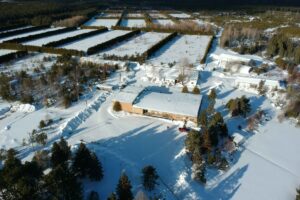Remote communities playing catchup in the business and communications of the global digital world
A greater effort must be made to bridge the digital divide to allow Indigenous people and communities to participate in the glbbal technology world.
That was a recurring theme in a recent webinar and panel discussion hosted by the MacDonald-Laurier Institute on the challenges and opportunities of Indigenous People and the New Economy.
The speed of technological change in AI, robotics, virtualization and process automation is happening at a fast pace. But it’s left Indigenous and Metis communities perpetually trying to play catchup, noted moderator Ken Coates, a distinguished fellow with the institute’s Indigeous policy program.
“It’s like running a 100-yard race where every time you run 10 yards they move the finish line 20 yards.”
Considering how fast Starlink can roll out high-speed satellite internet to remote communities, Coates called Ottawa’s cross-Canada internet delivery dates “almost laughable” and “not ambitious enough.”
Without robust internet on reserve, James Delorme, CEO of British Columbia-based Indigelink, said remote communities simply can’t participate in these emerging technologies.
An early internet adopter in the 1990s, the former chief of the Klahoose First Nation, runs a digital solutions company.
With a seat on the Telus Indigenous Advisory Council, Delorme makes it known that telecom companies need to understand that connectivity will drive First Nation economies.
But the ability to obtain financing still remains a major hurdle for many Indigenous entrepreneurs.
Breaking into the digital space was not easy, said Delorme, and it came at a “huge personal risk,” in his struggle obtain startup capital.
As a fledgling entrepreneur, Delorme said he relied on friends and relationships in struggling to the point of establishing revenue stream.
“There’s just so many barriers for us, as startup companies, to get that funding.”
The 147-year-old Indian Act continues to make life difficult for Indigenous entrepreneurs to tap into mainstream sources of capital, added Jake Dockstator, executive director of the Sioux Lookout Friendship Accord, a regional economic development corporation in northwestern Ontario.
Unable to mortgage their homes to secure capital from lenders, communities and entrepreneurs have limited alternatives.
These legislative restrictions were originally put in place to prevent the private sale of the land base of the reserve.
“Today, it’s preventing growth opportunities from coming on reserve,” Dockstator said.
When it comes to building on reserve, communities are restricted to ministerial guarantees.
Government funding initiatives are often oversubscribed, meaning there’s a flood of applicants and not enough funding to go around.
The Friendship Accord focuses on training and education but also on consultation and accommodation to apprise communities on infrastructure development goings-on around the region.
Though there’s a definite feeling by leadership “not be left behind” on the technology front, often they’re faced with more pressing issues like housing, food security, health care and access to energy.
The two-year election cycle makes for frequent leadership turnover, making it difficult to make meaningful change at the policy level.
Dockstator finds tech initiatives like Connected North could be utilized more by the communities. It would certainly help newcomers like himself to reach leaders in distant communities.
His organization looks to build better relationships between the tech sector and Indigenous leaders later this year at an upcoming conference in Toronto.
The inaugural Technology and Indigenous Development Summit on Dec 5 and 6 is a solution-oriented gathering to discuss problems such as food security, clean water, housing, remote business, employment and training.
Yukon entrepreneur Cherish Clarke, president of Digital Engine Technology, places an emphasis on Indigenous students pursuing higher education to build up their skill-sets toward technology and STEM careers.
These are life-long learning opportunities that are far from stagnant because technology is always evolving, she said.
“You can start learning today and never get to the end of your learning journey.”
Clarke has helped cultivate a budding network of Indigenous IT professionals in the Far North, offering employment and mentorship to women, BIPOC, LGBTQ and two spirit people.
“I like to think of myself as the place where technology and culture intersect.”
She said technology can be uniquely harnessed to learn more about Indigenous cultural ways of being and knowing.
Clarke said she has personally digitized and archived more than 3,000 recorded interviews of elders from cassettes and VHS tapes into MP3 and MP4 formats.
There are plenty of job opportunities for that kind of work, said Clarke, which provide an entry point for people to enter the tech field.
“Within high technology, there’s a real cultural aspect and ways we can unlock traditional knowledge to teach Indigenous people coming forward about their language and identity and knowledge of their elders.”
This article was published by: Ian Ross
Visit the original article here



